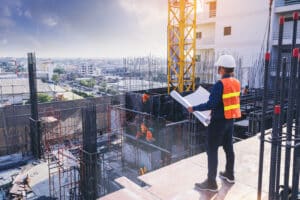AIA Partner Engineered Tax Services provides an overview of tax credits and other forms of assistance.
Early 2020 has rolled in unlike any other year in the US and perhaps even world history. Below in this article are some less know Tax Reprieves that can be financially beneficial to businesses through these difficult times. The COVID-19 pandemic has changed American lives and businesses in ways that had only been played out in movies. Every industry and individual has been impacted in some form, including the architectural and design communities.

The pandemic has come during the height of income tax filings. Thankfully, tax deadlines and payments have been extended for 90 days to July 15. And the government and IRS have taken drastic steps to support communities with bills such as the IRS’ “People First Initiative.”
AIA member firms should remember that there are existing tax credits and deductions available that were earlier approved by Congress that may help generate cash flow. To that end, certain tax credit programs remain in place, such as Research & Development tax credits and the 179D tax deduction for energy-efficiency measures.
Research & Development tax credits (R&D)
This federal credit (and state credit in 42 states) is an incentive that helps offset a percentage of payroll costs for qualifying activity relating to a new or improved product or process, technical innovation, and an iterative process to overcome technical challenges.
The credit often has some level of application for every unique project that an architect designs regardless of the building type, location, cost, or technical challenge. Innovation may relate to energy efficiency, structural complexities, building components, historical renovations, site challenges, environmental impact, and more.
For more details on the R&D tax credit, read Engineered Tax Services’ recent article on aia.org here or download their free e-book.
179D deductions for energy-efficient public buildings
Designers can reap the benefit of provisions contained within the Energy Policy Act (also known as the 179D tax deduction) when they design publicly-funded buildings that are energy efficient. Public buildings include city, county, state, and federal buildings such as K-12 schools, public university buildings, fire stations, and city offices. And the deduction applies both to new construction and retrofits for lighting, mechanical, and envelope efficiencies.
The incentive is up to $1.80 per square foot, or 60 cents per square foot for lighting, 60 cents for HVAC, and 60 cents for building envelope retrofits. One architect designed a new 109,000-square-foot elementary school in Texas that qualified for a federal tax deduction of $197,049. At a 40 percent tax rate, that equals $78,819 in direct income tax savings.
For more details on 179D, read Engineered Tax Services’ recent article on aia.org here.
These benefits may not solve every business problem or return the business to normal overnight, but some of these may provide a silver lining to assist many businesses in weathering the storm.
Engineered Tax Services is a licensed engineering firm specializing in complex federal tax regulations. Their primary focus is in real estate and business tax efficiency and tax consulting for individuals and CPAs to assist with areas that require specialized knowledge, testing, energy modeling, and design activity. If you have questions about any of these areas listed, please reach out to Heidi Henderson with Engineered Tax Services to review your activity and projects for potential tax savings. Heidi can be reached at [email protected].



